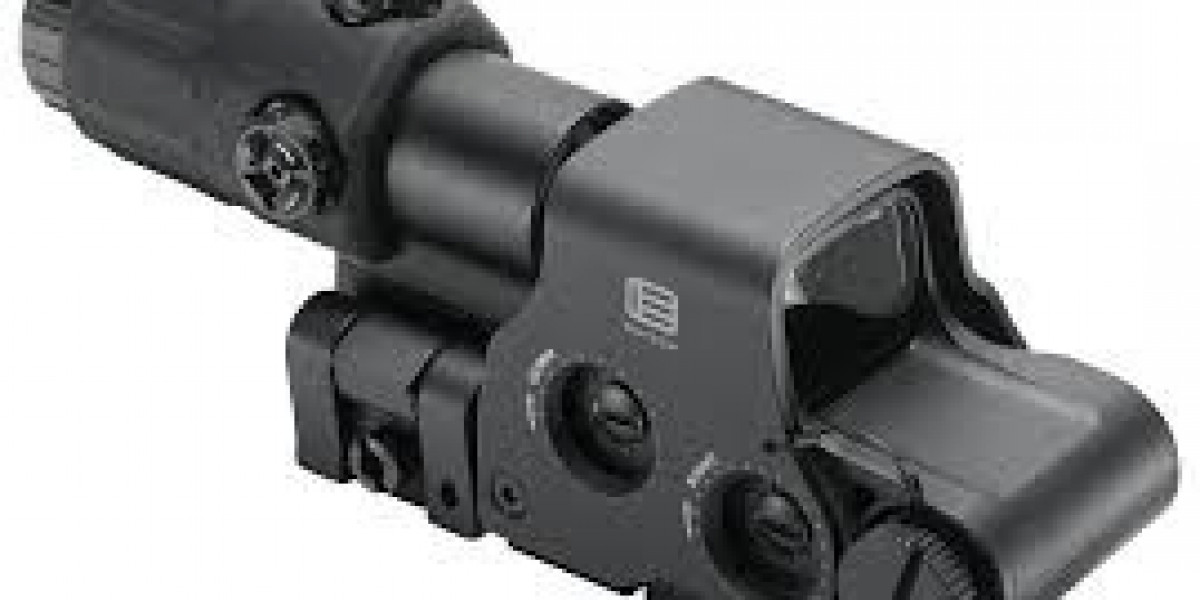In today’s world of precision shooting, advanced optics have revolutionized how marksmen, hunters, and defense professionals aim. One of the most game-changing innovations is the holographic sight. Designed for speed, accuracy, and flexibility, this technology transforms how users acquire and engage targets in any environment.
Unlike traditional scopes or red-dot optics, holographic sights use laser-generated holograms that appear to float in space. This feature allows for rapid target acquisition, even when the shooter’s head or weapon position shifts slightly — a major advantage in dynamic and tactical conditions.
In this article, we’ll explore the technology, advantages, applications, and maintenance of holographic sights and why they’ve become an essential tool in modern firearm optics.
What Is a Holographic Sight?
A holographic sight is an advanced optical aiming device that projects a reticle image onto the shooter’s field of view using laser and holographic technology. The reticle appears superimposed on the target, allowing the shooter to maintain full situational awareness without needing perfect alignment between the sight and the eye.
Developed primarily for tactical and military applications, holographic sights now serve a wide range of uses — from law enforcement to competitive shooting and hunting. They are known for their parallax-free accuracy, wide field of view, and fast target engagement.
How Does a Holographic Sight Work?
The working mechanism of a holographic sight combines optical physics and laser projection. Inside the device, a laser diode illuminates a hologram of the reticle, which is recorded in a holographic film mounted on a glass window.
Unlike a red dot sight, which reflects an LED image off a lens, a holographic sight reconstructs a 3D light wave pattern that remains stable even if the user’s eye moves. This ensures that the point of aim stays consistent, improving precision and minimizing parallax error.
Key internal components include:
Laser diode: Generates the holographic image.
Collimator lens: Focuses the beam for clarity.
Holographic film: Stores the reticle pattern.
Optical window: Displays the final image to the shooter.
Advantages of Using a Holographic Sight
1. Rapid Target Acquisition
Holographic sights enable shooters to lock onto targets faster. Since the reticle floats naturally in the user’s line of sight, no head repositioning is required.
2. Enhanced Accuracy
Even under stress or rapid movement, the reticle stays fixed on the target. This helps in maintaining shot precision during tactical operations or moving hunts.
3. Improved Peripheral Vision
The wide optical window and minimal obstruction allow shooters to maintain awareness of their surroundings — crucial for combat and hunting environments.
4. Parallax-Free Performance
Regardless of eye position, the reticle’s point of impact remains true. This feature greatly enhances reliability and consistency.
5. Compatibility with Night Vision Devices
Many modern holographic sights integrate seamlessly with night vision systems and magnifiers, making them versatile for both day and night missions.
Holographic Sight vs. Red Dot Sight
While both devices aim to enhance targeting, they differ significantly in technology and performance.
| Feature | Holographic Sight | Red Dot Sight |
|---|---|---|
| Technology | Laser-generated holographic reticle | LED reflection |
| Parallax | Virtually none | Minimal at close range |
| Speed | Faster in dynamic shooting | Slightly slower |
| Power Use | Higher | Lower |
| Image Clarity | Crisp, detailed reticle | Simple illuminated dot |
| Price | Premium | More affordable |
For professionals who prioritize accuracy and adaptability, holographic sights provide a significant performance edge.
Applications of Holographic Sights
Holographic sights are not limited to military or police use. Their versatility extends across various domains:
Military & Law Enforcement: Used for quick engagement in close combat and urban scenarios.
Hunting: Ideal for tracking fast-moving targets and maintaining focus.
Competitive Shooting: Offers split-second precision during timed events.
Tactical Training: Helps improve response time and aiming stability.
The holographic sight has become a trusted optical solution where precision and reliability are non-negotiable.
Maintenance & Care Tips
To keep your holographic sight in peak condition:
Clean lenses gently with microfiber cloths to avoid scratches.
Check mounts and screws regularly to ensure alignment.
Avoid direct sunlight exposure for prolonged periods.
Replace batteries as per manufacturer recommendations.
Store in dry conditions to prevent internal condensation.
Proper maintenance not only extends the lifespan of the sight but also ensures consistent accuracy in all conditions.
The Future of Holographic Sight Technology
As optical science advances, we can expect AI-assisted reticle tracking, lightweight composite housings, and enhanced low-power lasers to define the next generation of holographic sights. Integration with augmented reality (AR) overlays and digital sensors will also enhance precision and adaptability across applications.
These innovations are transforming how shooters interact with their optics — offering faster performance, smarter data integration, and unbeatable accuracy.
Conclusion
The holographic sight represents the perfect blend of optical engineering and tactical functionality. From military missions to professional shooting competitions, this technology continues to push the limits of performance and precision.
If you’re looking to upgrade your shooting setup with cutting-edge optical gear, investing in a high-quality holographic sight will give you a clear, fast, and reliable advantage every time you pull the trigger.








